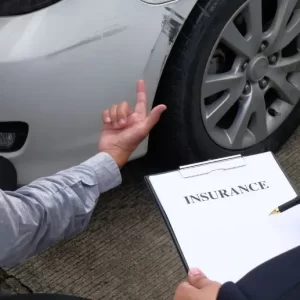Accidents happen. And when they happen to our children, the emotional toll is immense. Adding to the stress is the legal process if your child has suffered a personal injury. This guide clarifies key aspects of these sensitive cases, providing essential information in a straightforward way.
Understanding Personal Injury Claims for Minors
A minor, legally defined as someone under 18, cannot directly pursue a lawsuit. When a child is hurt due to someone else’s negligence – a car accident, a dog bite, or a slip and fall at a store, for instance – an adult must act on their behalf. This typically means a parent or legal guardian files a claim.
Consider the case of 8-year-old Emily, injured when a poorly maintained swing set collapsed at a local park. Her parents, acting on her behalf, filed a personal injury claim against the city, alleging negligence in maintaining the playground equipment. This is a common scenario. Other examples include injuries from defective products, medical malpractice, or abuse.
It’s crucial to understand that the aim of a personal injury claim is to obtain compensation for the child’s medical expenses (past and future), pain and suffering, and any long-term impact on their life.
What is a Guardian Ad Litem, and When is One Needed?
A Guardian Ad Litem (GAL) is a court-appointed individual tasked with investigating what’s in a child’s best interests during legal proceedings. Think of them as independent advocates for the child.
A GAL is often appointed when there’s a potential conflict of interest, or when the court believes the child’s needs might not be adequately represented by their parents. For example, if a child is injured in a car accident where a parent was driving, a GAL might be appointed to ensure the settlement fairly compensates the child, independent of any concerns the parent might have regarding their own liability. The GAL interviews the child (if age appropriate), parents, witnesses, and reviews medical records to form an opinion, which they then present to the court.
The GAL appointment process varies by jurisdiction, but generally involves a motion to the court. GALs are typically attorneys, social workers, or trained volunteers. Their fees are usually paid from the settlement funds or as the court directs.
Protecting Your Child’s Best Interests in a Minor’s Personal Injury Case
The legal system prioritises protecting vulnerable individuals, especially minors. This is why personal injury cases involving children have extra layers of oversight. One key element is ensuring that any settlement reached truly benefits the child.
What happens if a parent’s actions contributed to the child’s injury? For instance, imagine a child wasn’t properly secured in a car seat. In such instances, the court takes extra care to ensure the settlement is fair to the child and isn’t compromised by the parent’s potential negligence. This can influence the GAL’s appointment and the court’s review of the settlement.
Remember, seeking legal counsel from an attorney experienced in personal injury cases involving minors is paramount. While there are costs associated with legal representation, many attorneys offer free consultations and work on a contingency fee basis, meaning they only get paid if you win your case.
Navigating Settlement Negotiations in a Personal Injury Claim Involving a Minor
Negotiating a settlement in a child’s personal injury case requires careful consideration. You’ll need to gather all relevant documentation, including medical records, bills, and any evidence supporting the claim.
The insurance company (or the defendant directly) will likely make an initial offer. Don’t feel pressured to accept it immediately. Your attorney will help you assess the offer’s fairness, considering the severity of the injury, the long-term impact on the child’s life, and the potential costs of future medical care.
Structured settlements are common in cases involving minors, especially when the settlement is large. These settlements provide payments over time, instead of a lump sum, ensuring the child has financial support throughout their life.
Court Approval of Settlements for Injured Minors: What to Expect
Even if you and the insurance company reach an agreement, a settlement for a minor is not final until a court approves it. This process involves a hearing where the judge reviews the settlement terms to ensure they are fair and in the child’s best interests.
The court will consider factors such as the child’s age, the nature and extent of the injuries, the potential long-term impact, and the adequacy of the settlement amount. The GAL’s report, if one were appointed, will carry significant weight. The court may also question the parents to understand how the settlement funds will be managed.
Managing Settlement Funds for Your Child After a Personal Injury: Trusts and Guardianships
Because a minor cannot manage large sums of money, the court will determine how the settlement funds will be handled.

Two common options are:
- Guardianship: The court appoints a guardian to manage the funds until the child turns 18. The guardian must provide regular accountings to the court.
- Trust: A trust agreement is established with a trustee managing the funds according to the trust’s terms. Several types of trusts can be used, including special needs trusts, which allow the child to receive government benefits without jeopardising eligibility, and irrevocable trusts, which protect the funds from creditors. The choice of trust depends on the child’s specific needs.
Beyond the Settlement: Supporting Your Child’s Recovery After a Personal Injury
While the settlement provides financial support, remember that healing extends beyond monetary compensation. Prioritise your child’s emotional and physical well-being. This might involve therapy, ongoing medical care, and simply providing a supportive and understanding environment. Personal injuries may have lasting effects, and addressing those needs is just as vital as securing a settlement in the first place.






